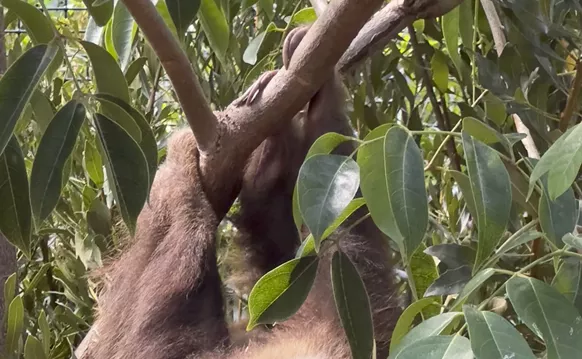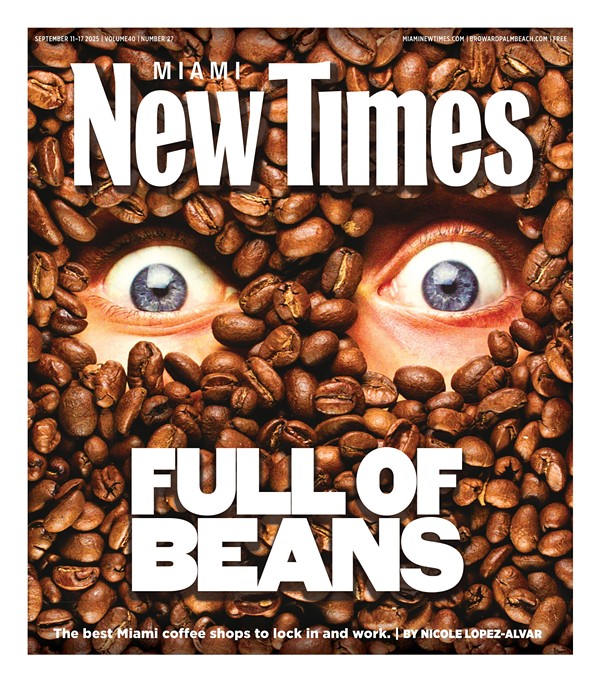Once the downpour ceased, photographer Daniel Duncan stepped out onto the street to see a group of kids playing across the street. The overflowing puddles were like miniature oceans, the silver bumpers from nearby parked cars like stationary speedboats. One by one, the kids took turns grabbing hold of a car's bumper and zigzagging as if they were gliding through an open sea.
"It was the wildest thing I'd ever seen," Duncan recalls of the awestruck moment. "I had never seen anything like that before."
The scene is one of many featured in Duncan's first photobook, Portraits of Cuba.
The book, published by University Press of Florida and due out in September, is not your standard book of expertly shot images. The pages feel more like a blend of a documentary and a nonfiction book. Duncan's photos take over the pages, and alongside the colorful visuals is an equally colorful narrative.

Centro Habana, Havana.
Photo by Daniel Duncan. From Portraits of Cuba, by Daniel Duncan, Marcela Vásquez-León, and Dereka Rushbrook. Gainesville: University of Florida Press, 2020. Reprinted with permission.
When he returned home to Arizona, he sorted through the photos. An idea for a traditional coffee-table book began to take shape in his mind.
"[The thought] evolved from there into a more solid idea of giving the images and the people of Cuba a voice," he explains.
Duncan then employed the expertise of two of his colleagues from the University of Arizona, Marcela Vasquez-Leon and Dereka Rushbrook, who contributed the written component. Each co-author brings a unique perspective to the table: Vasquez-Leon is an anthropologist, and Rushbrook is a geographer.
"We did a whole series of interviews with Cubans from all walks of life — students, professionals, shopkeepers, educators, medical professionals, journalists — a myriad of people," Duncan says. "We wanted to give Cubans who live on the island a voice and pair it with the images."

Habana Vieja, Havana.
Photo by Daniel Duncan. From Portraits of Cuba, by Daniel Duncan, Marcela Vásquez-León, and Dereka Rushbrook. Gainesville: University of Florida Press, 2020. Reprinted with permission.
"We didn't want our filter to influence what the [interview subjects] would say," Duncan explains.
Excerpts from the interviews are blended with essays written by Vasquez-Leon and Rushbrook.
"The whole focus of the book has always been to be nonpolitical," Duncan says. "We are just presenting what we saw, what the lens was able to capture, in a photojournalistic way. Our intent was to not take a political stance but to let the Cubans themselves tell their own story."
The photographer's first impression of the island conformed to the notion that Cuba is a place stuck in time.
"The more I went back, it became less of that," he says.
Sure, you have the old-yet-classic cars synonymous with Cuba parked along dirt roads — but many of those same cars, Duncan notes, have wholly new interiors.

La Lisa, Havana.
Photo by Daniel Duncan. From Portraits of Cuba, by Daniel Duncan, Marcela Vásquez-León, and Dereka Rushbrook. Gainesville: University of Florida Press, 2020. Reprinted with permission.
Born in Ohio, Duncan spent his formative years in the northeastern part of Brazil before moving back to the States in 1979. Although he now lives in Tucson, Duncan's work on Arizona Public Media's In the Americas takes him all over South and Central America as well as to the Caribbean.
Duncan is working on piecing together his expansive collection of images from northeastern Brazil for his second book. This time, the photographer is focusing his lens on three iconic types of people of the region for a "where the desert meets the sea" theme.
"I have the rural cowboys and the coastal fisherman," Duncan says, "and then there's the distinct experience of the carnival that takes place in northeastern Brazil, which is totally different than what takes place in the south in Rio."
Portraits of Cuba. By Daniel Duncan, Marcela Vasquez-Leon, and Dereka Rushbrook. University Press of Florida. 2020. 240 pages. Hardcover, $34.99.










